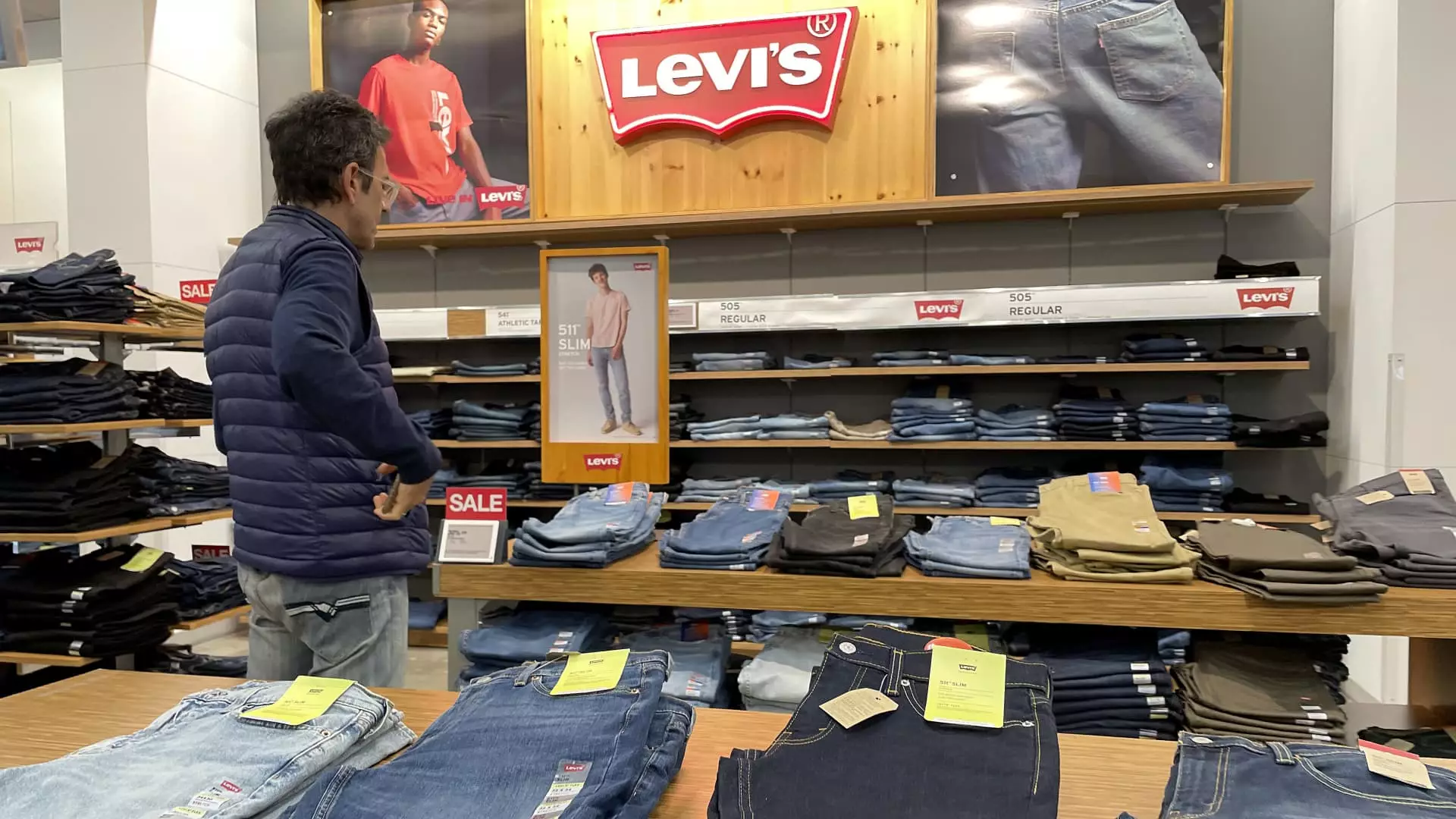In recent months, Levi Strauss & Co has found itself in an intriguing position within the ever-evolving fashion landscape. While consumer interest in denim remains robust—with the Levi’s label specifically experiencing a 5% uptick in sales during the third quarter—concerns linger regarding the broader performance of the company’s portfolio. Particularly, the Dockers brand’s decline has sparked discussions about potential strategic shifts, including the possibility of divesting the label. This article delves into Levi’s current marketplace dynamics, financial outcomes, and strategic outlook.
The resurgence of the Levi’s label signals robust consumer engagement, marking a notable 5% increase in sales, the strongest growth in two years. However, this positive trend is somewhat overshadowed by the lackluster performance of Dockers, which has witnessed a steep 15% decline in sales to $73.7 million. The juxtaposition between these two brands underscores a significant challenge for Levi Strauss: how to manage an aging brand like Dockers that no longer resonates with contemporary consumer fashion choices, without jeopardizing the vitality of its flagship line.
In an era where casual attire dominates wardrobes, the shift in preference away from khakis has been stark. Dockers, once pivotal in providing an alternative to denim, finds itself struggling to compete in a marketplace that has increasingly gravitated towards more versatile and stylish options. Consequently, the company is contemplating divesting from Dockers, a decision framed by the finance chief, Harmit Singh, as a move that could both enhance margins and stabilize income volatility. It remains to be seen how this potential separation might affect both brands moving forward.
Levi’s recent financial reporting offers a mixed picture. With overall revenue plateauing at $1.52 billion—slightly up from the previous year’s $1.51 billion—this performance fell short of Wall Street’s expectations. Planned revenue growth of merely 1% juxtaposes sharply with analysts’ anticipations of 2.3%. Interestingly, while Levi’s celebrated an earnings per share (EPS) of 33 cents, which slightly exceeded projections, the stock still saw an 8% drop post-announcement. This chastening reaction from the market reflects both concerns about lagging revenues and the potential repercussions of Dockers’ persistent downturn.
Furthermore, despite the positive results of the third quarter, the company has adjusted its full-year revenue expectations downward. This adjustment reveals the cautious tone that Levi’s is adopting in light of fluctuating sales trends across its brand portfolio. Particularly concerning is the dip in the Americas and Asia regions, where Levi’s has struggled with issues ranging from cybersecurity breaches impacting wholesale customer sales to economic challenges in China.
A key area of focus for Levi’s has been its strategic pivot toward direct-to-consumer sales, a method designed to enhance profitability while cultivating closer customer relations. During the last quarter, Levi reported a robust 10% increase in direct sales, fuelled by a 16% surge in e-commerce. This strategy aligns with broader retail trends emphasizing the importance of data-driven marketing and consumer insights to foster deeper connections with shoppers.
Levi’s aim to increase direct sales from 44% to 55% of total revenue speaks to its commitment to adapting in a competitive environment. Such a shift not only allows for higher margins but also aligns with contemporary consumer behavior that increasingly favors online shopping experiences. The brand’s recent partnership with global icon Beyoncé—who represents core Levi’s products—highlights Levi’s efforts to blend celebrity culture with effective marketing strategies.
Looking ahead, Levi’s faces a dual challenge: invigorating the Dockers brand or facilitating its exit while amplifying its successful Levi’s label. Consumer interest in denim remains buoyant, and as long as the company continues to innovate and engage with cultural trends, it stands to benefit from this appetite for classic apparel. Furthermore, the anticipated reorganization of leadership in China could reinvigorate performance in that market over time.
However, the broader economic climate’s implications for consumer spending cannot be overstated. Levi Strauss & Co must not only navigate its internal brand dynamics but also prepare for external economic pressures. While Levi’s is on a trajectory marked by promising growth in certain sectors, its challenge will be harmonizing its brand portfolio with evolving consumer preferences while navigating profitability pathways across a complicated retail landscape.

